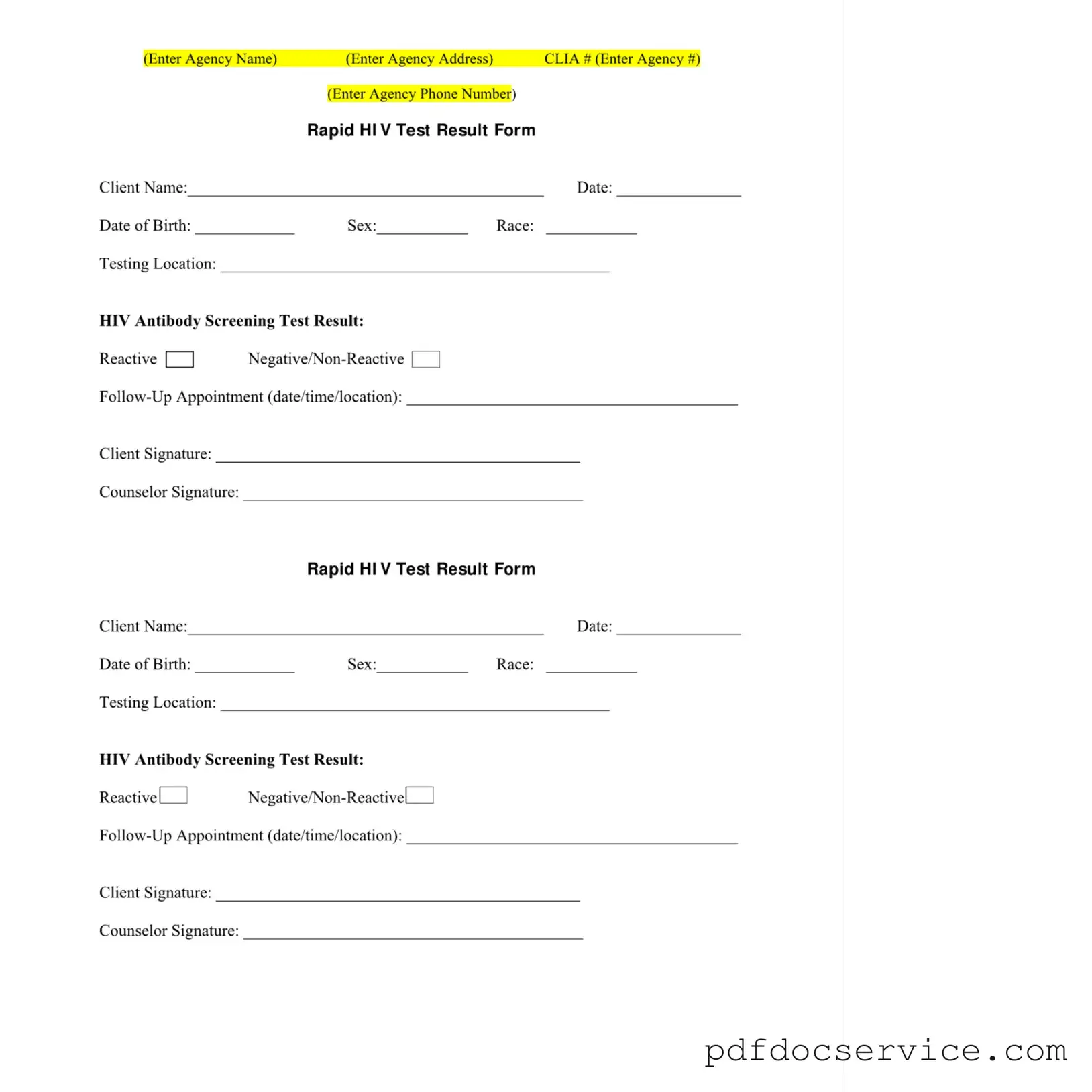The Negative HIV Test form serves as a crucial document in the process of HIV testing, ensuring that individuals receive accurate and clear information about their health status. This form includes essential details such as the client's name, date of birth, race, and the location where the testing took place. It records the results of the HIV antibody screening, indicating whether the result is reactive or non-reactive. A follow-up appointment is often recommended and noted on the form, providing clients with the next steps in their healthcare journey. Additionally, the form requires signatures from both the client and the counselor, affirming that the information has been communicated effectively. Beyond the test results, the form also encompasses logs for temperature control, which are vital for maintaining the integrity of the testing devices. These logs document daily temperature checks and corrective actions taken if the storage conditions fall outside acceptable ranges. Overall, the Negative HIV Test form not only facilitates the reporting of test results but also plays a significant role in ensuring the reliability of the testing process and the well-being of clients.
